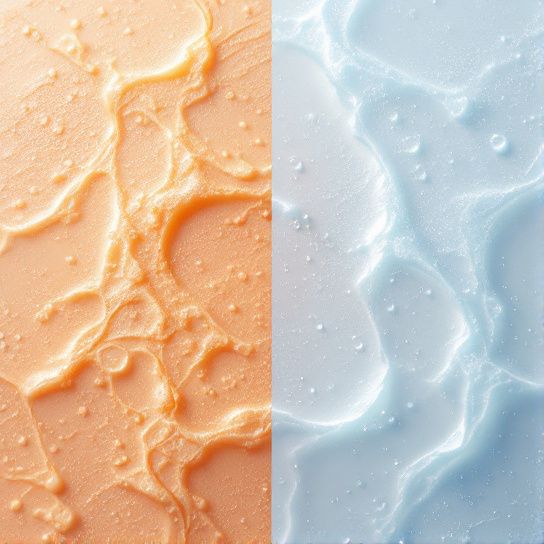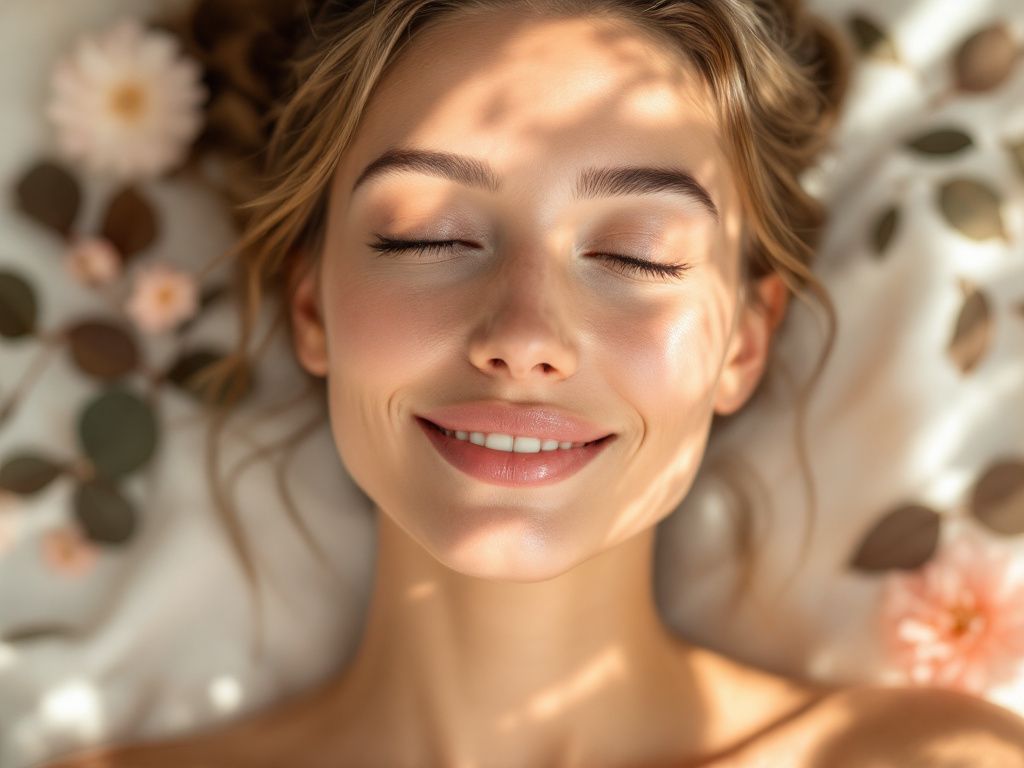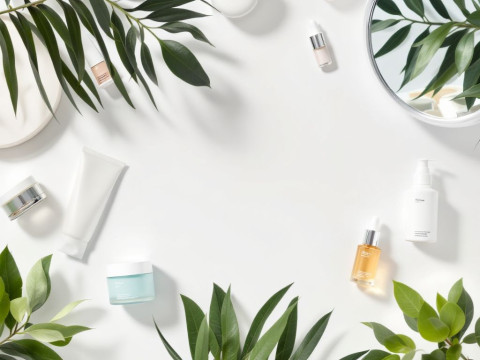Is your skin feeling tight and flaky, almost like a constant battle with an invisible snowstorm? You know, that dry and parched sensation that all too often signals the dominance of dry air conditions. Whatever the season, dry air can be an ever-present antagonist, creating an environment where dry skin pimples can thrive. Let’s unravel this conundrum together and uncover practical ways to guard your skin against moisture loss.
Why Dry Air Wreaks Havoc on Your Skin
First things first, let’s get on the same page about why skin feels like it’s revolting. Dry air strips the skin of its essential natural oils. Without these oils, the skin barrier becomes compromised, leading to moisture loss. Yep, that tight, itchy feeling and those stubborn dry skin pimples are a not-so-friendly reminder of how relentless environmental factors can be.
The Vicious Cycle of Moisture Loss
Picture this: Your skin is a fortress, and the natural oils are its defenders. Dry air weakens these defenders, allowing moisture to escape, leaving your skin too dry. This moisture loss sets the stage for flakes, itchiness, and you guessed it, those pesky dry skin pimples. Breakouts that happen alongside dryness? Not as unusual as you might think. It’s one of those frustrating Team Villain moves where oily spots meet cracked, parched skin.
Strategies to Combat Dry Air
Now, let’s dive into how you can survive and, dare I say it, thrive despite the onslaught of dry air. Here are some friendly pieces of advice to help you lock in moisture and repair your skin barrier.
Hydrate: It’s All About the Base

Start from the inside out. Staying hydrated is no skin secret, but it’s more crucial than we often remember. Drink plenty of water daily to replenish hydration from within. And hey, herbal teas count too, especially if plain water starts feeling a bit too plain. Hydration isn’t just about drinking water—your whole lifestyle contributes.
**Give These a Try:**
- Water: Keep that hydration flowing. Consider a reusable bottle to track your intake. Trust me, watching the water level drop gives a weirdly satisfying sense of accomplishment.
- Hydrating Foods: Think cucumber, watermelon, or oranges. They offer a little hydration buffet for your skin.
Build a Skin-Nurturing Routine
Creating a routine that combats dry air can stave off those skin woes. It doesn’t have to be complicated; simple steps and the right products can make a world of difference.
**1. Choose the Right Cleanser:** Opt for a gentle, hydrating cleanser. Avoid heavy astringents or foaming tapestries that might strip your skin further. You need a cleanser that works without being a bulldozer.
**2. Moisturize, and Then Moisturize Some More:** Layer it up, like you would on a breezy autumn walk. Look for a thicker cream or ointment to coat the skin, sealing in that precious moisture. Peep those ingredients—ceramides, glycerin, and hyaluronic acid are good pals to have on board.
**3. Seal it In:** Here’s a little trick: apply moisturizers onto damp skin. Your face doesn’t mind a little soppiness before the cream really works its major boost move.
Environment Tweaks at Home
Dry air doesn’t just hover around us outdoors—it’s a culprit in our living spaces too. Making some simple changes at home can create a skin-friendly habitat.

**Get Yourself a Humidifier:** This small change often does wonders. A humidifier adds moisture to the air, making your home a little more oasis-like for skin. Plus, you’ll sleep more comfortably.
**Watch the Indoor Heat:** Ever notice that dry feeling hits full force when you crank up the heat indoors during winter? Keeping the temperature moderate can become your new norm after you feel the difference it makes.
Sunscreen Isn’t Just for Sunny Days
Yep, I’m taking about SPF. Even when it’s gray outside, UV rays still have their counterproductive little ways of reaching your skin. Opt for at least SPF 30 to offer some protection every day.
Separate Those Dry Skin Pimples from Acne
Let’s quickly circle back on understanding dry skin pimples. These breakouts differ from your usual acne, in that they’re primarily due to inadequate moisture levels combined with dry flakes blocking pores. The key lies in hydration and non-comedogenic products. Power in knowing that distinction means combat mastery!
Reinforce & Repair: Be Patient
Continuing along this path daily can lead to a noticeable change. Repairing the skin barrier takes some time, and patience is your companion in this skin journey tango. If you stay committed to consistent care and remain mildly adaptive to what your skin speaks to, you’re bound to see an eventual transformation that feels, quite literally, uplifting.
Product Ingredient Table

Let’s lay it out here. Look for these complimentary besties in those product ingredients, like token magic elixirs:
| Ingredient | What it Does |
|---|---|
| Hyaluronic Acid | Retains moisture, plumping skin |
| Ceramides | Fortifies the skin barrier |
| Glycerin | Acts as a humectant for hydration |
| Shea Butter | Provides rich, occlusive moisture |
| Aloe Vera | Cools, soothes, moisturizes lightly |
Tailor Your Approach for Changing Seasons
Adaptability wins battles, not just with broader life, but in your daily face-to-face moments. Different seasons ask for tweaks here and there: a heavier moisturizer in winter, lighter in summer might be your cornerstone tweaks.
Quick Reminders & Recaps
Alright, let’s wrap up this casual skin chitchat because too much of a fixate is likely a dampened gleam too. Here’s what to cue in, jotted and rethought to hone at any dry skin defeating toolkit you brandish:
- Hydrate inside and out—water is your friendly reminder, and even changing up what you eat can help!
- Use a gentle cleanser, thicker moisturizers, and never skip that SPF.
- Humidifiers are surprisingly game-changing as you’re carving pathways to skin comfort.
Trust me, after a stint from hitching this plan on the daily, your skin won’t just rehydrate—it’ll start to thank you by greeting you with less temperamental morning feels.
So give it a go, watch and feel as your skin blossoms into its radiant self. Surely & unapologetically, you’ve got the monopoly on perfecting dry skin remedies. And when in doubt? Let a gentle touch lead, and warmth prevail despite that natural havoc of dry air climates all around.
Frequently Asked Questions
Can dry skin cause pimples?
Dry skin itself does not directly cause pimples, but it can contribute to the development of acne. Dry skin can lead to an excess buildup of dead skin cells, which can clog pores and allow acne-causing bacteria to penetrate deeper into the skin. Additionally, dry skin may trigger the production of more sebum, which can also contribute to acne[2][3][5>.
How can I treat pimples on dry skin?
To treat pimples on dry skin, it is crucial to use gentle, non-comedogenic products that do not strip the skin of its natural moisture. Consider using products containing salicylic acid, tea tree oil, and niacinamide, which can be effective against acne without causing excessive dryness. Also, use a daily moisturizer that is oil-free and non-comedogenic to keep the skin hydrated without clogging pores. Avoid harsh exfoliants and opt for gentle cleansers and moisturizers[1][3][5>.
What skincare routine is best for dry skin with pimples?
A skincare routine for dry skin with pimples should focus on hydration and gentle care. Use a gentle cleanser to remove dirt and bacteria without overdrying the skin. Apply an oil-free and non-comedogenic moisturizer immediately after cleansing. Avoid overwashing and exfoliating, as these can further dry out the skin. Use lukewarm water instead of hot water, and pat-dry your skin instead of rubbing it. Consider using a humidifier to add moisture to the air[1][5][3>.
When should I see a dermatologist for dry skin and pimples?
If home remedies and over-the-counter treatments are not effective in managing your dry skin and pimples, it is advisable to see a dermatologist. A dermatologist can help determine the underlying cause of your dry skin and acne, and prescribe stronger medications or recommend specific treatments tailored to your skin type. They can also help you avoid worsening the dryness while treating the acne[2][3][5>.
References- 6 Ways to Help Treat Acne When You Also Have Dry Skin. Healthline.
- Can Dry Skin Cause Acne? Dermatologist-Approved Treatments. Eternal Dermatology.
- Dry skin and acne: Treatments and home remedies. Medical News Today.
- Dry Skin and Acne: Causes, Treatments, Home Remedies, and More. Healthline.











